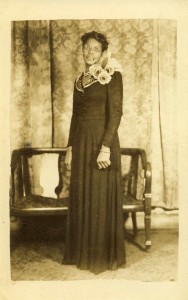 When writing memoir or creative non-fiction, doubt will always linger when one has to rely on memory rather than documented facts. When I wrote a book of about the life of Amelia MacIntosh, a Southern, African-American woman who moved to New Jersey with my family at the beginning of the Civil Rights Movement, I could still recall the tone and texture of her brown hands, the way her hips spread under her thin cotton dresses, and the sound of her Southern accent. I knew she had grown up on the Delta. I knew she had worked at one time for a family in Ohio before moving to Tennessee. I knew her husband, Peter, was many years older and that her son was too young to die. I also knew that her life changed during of the Civil Rights Movement and as a consequence she had lessons to share.
When writing memoir or creative non-fiction, doubt will always linger when one has to rely on memory rather than documented facts. When I wrote a book of about the life of Amelia MacIntosh, a Southern, African-American woman who moved to New Jersey with my family at the beginning of the Civil Rights Movement, I could still recall the tone and texture of her brown hands, the way her hips spread under her thin cotton dresses, and the sound of her Southern accent. I knew she had grown up on the Delta. I knew she had worked at one time for a family in Ohio before moving to Tennessee. I knew her husband, Peter, was many years older and that her son was too young to die. I also knew that her life changed during of the Civil Rights Movement and as a consequence she had lessons to share.
My book was about capturing those lessons with description of time and place so that I could celebrate Amelia’s life. I researched the details of those years, the names and the places, the foods and the brands. I made sure the weather reports matched my visualizations and the household activities were accurate. However, much of what I wrote was based on my memories and, as I was a young child at the time, when I finished writing there were lingering doubts about whether I’d got it right. I asked my mother. Her memories gave authenticity to my own. I asked my sisters. Their memories were basically the same although they had different reactions. Still, I wondered. It was and is most important that the facts of Amelia’s life are correct. Her life was not fiction. Her life was her own.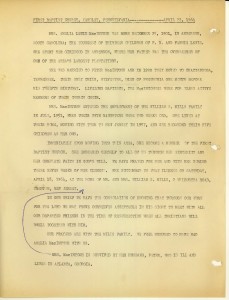
Fortunately, a few months ago my mother presented me with a black binder full of documents, letters and photos. Not many. Just enough to substantiate any and all details included in my book ‘Small Moments: A Child’s Memories of the Civil Rights Movement.
Amelia MacIntosh was born in 1901 and died in 1964. 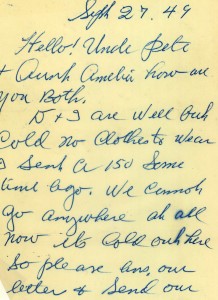 There are letters from Ohio and from her husband, Peter. There is a time card from Peter’s days on the railroad. And there are sad, desperate letters from her nephew, Perry. The facts of Amelia’s life were as she told me. She was honest and she was without drama. Her life was made up of moments – sad, happy, overwhelming moments that were small if placed against the universe, but real. I have the proof.
There are letters from Ohio and from her husband, Peter. There is a time card from Peter’s days on the railroad. And there are sad, desperate letters from her nephew, Perry. The facts of Amelia’s life were as she told me. She was honest and she was without drama. Her life was made up of moments – sad, happy, overwhelming moments that were small if placed against the universe, but real. I have the proof.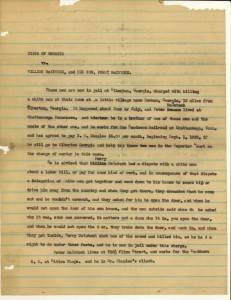
When writing creative non-fiction, be clear about what is important and must be stated as fact. Be honest with the facts of a person’s life. Be honest with your impressions. Distinguish the two as separate. And, if possible, use documents to substantiate your story. It is a huge relief to know my memories were correct. 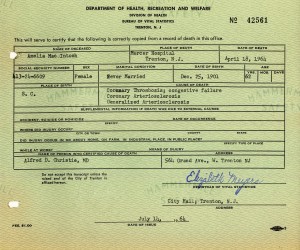
Well said, Mary!! and well done!!!
Thank you. Having documentation provides answers to so many questions – asked and unasked. It allows for peace of mind.